With TU VIVRAS, MON FILS [STAY ALIVE, MY SON], it is an impressive film that was presented at Venice Immersive this September. If history and memory is an incredible field of exploration for VR, Victoria Bousis chooses a massive set up using the most pioneering use of metahumans with AAA cinematic graphics. At the crossroads of cinema and video gaming, she pushes the limits of virtual reality to take us on a gripping and epic journey back to the tragic era of the Khmer Rouge in Cambodia by stepping into the shoes of a survivor and father in search of his lost son and his salvation.
Changing the world: the challenges of STAY ALIVE MY SON
Victoria Bousis – I have an atypical background: I started working as a prosecutor at the Attorney General’s Office in Chicago when I was in my early 20’s. I wanted to change the world, to defend people and their rights, to give the voice to the voiceless. And finally, that’s what led me to film. In politics, you quickly understand the limits of your own capabilities, dwarfed by bureaucracy. I wanted to tell human stories in a more impactful and boundless way to reach audiences and bring light to stories otherwise forgotten. In 2008, I met a director who took me on this crazy adventure… and here we are! Our first film, LA COMMEDIA DI AMOS POE, with Roberto Benigni was selected at the Venice Film Festival, and that was the beginning of my adventure as a producer. I was able to evolve in this industry choosing to integrate technology into my storytelling to reach younger audiences who craved agency, thereby evolving cinema by integrating gaming.
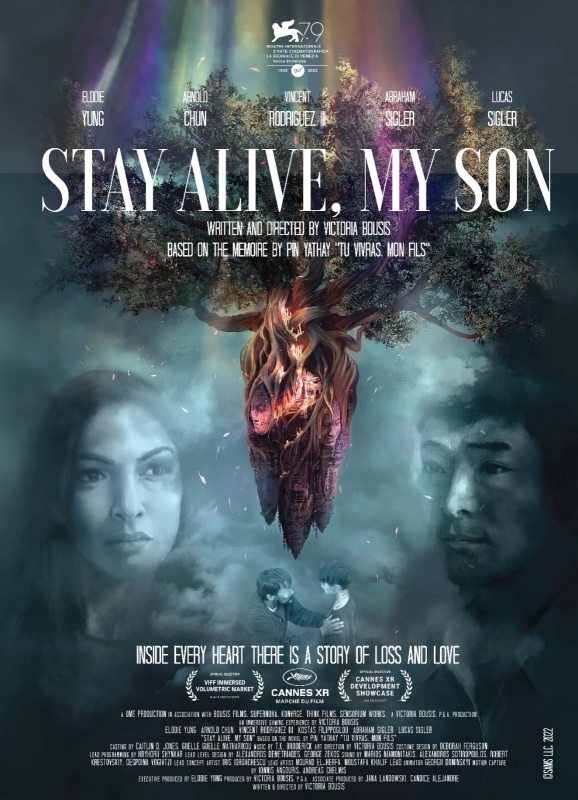
V. B. – And this is what finally brought me to immersive creation via virtual reality. Growing up, cinema for me was an event. Watching a newly released movie was an anticipatory phenomena that also imprinted me and made me think about the story longer. Now, this phenomenon has been somewhat diluted. Consuming content on streaming platforms by scrolling through carousels of limitless films does not always carry the same weight and lasting impact . There isn’t a particular attachment to rich memories linking us to films or powerful stories that leave us with lasting, thought provoking messages. At the same time, the video game industry exploded. It had matured,containing dynamically richer narratives, and emotive humanistic characters becoming very democratic,. Interactive storytelling emerged simultaneously as technology changed and I saw new possibilities, more complex emotions to be evoked, and a more powerful way to tell stories and enrich audiences.
V. B. – With all these findings, and an interest in the neurosciences involved in the development of VR, I decided to dig into the subject. I went back to school at MIT (Sloan School of Management), with the goal of designing stories that would be able to speak of emotions and compassion and hopefully open a real dialogue with audiences that penetrated the surface and challenged our core beliefs. When I discovered Pin Yathay’s book, STAY ALIVE MY SON, nine years ago, I was convinced that it had to be adapted for film. But Angelina Jolie made another film about Cambodia, FIRST THEY KILLED MY FATHER (2017), so I rethought my approach. STAY ALIVE MY SON, which was originally written in French called “TU VIVRAS, MON FILS, is a powerful, emotive, and cinematic story about a family and their plight during the Cambodian genocide which turns on a father having to abandone his 6-year old son to survive . I wanted to challenge myself as a director and creator to retell this story in an immersive format in hopes of imprinting audiences and urging them to act in protection of family unity via compassion. My incredible cast all experienced touching stories of family separation including the French-Cambodian actress, Élodie Yung, whose father is a survivor of the Cambodian genocide and powerfully portrays the mother in this experience.
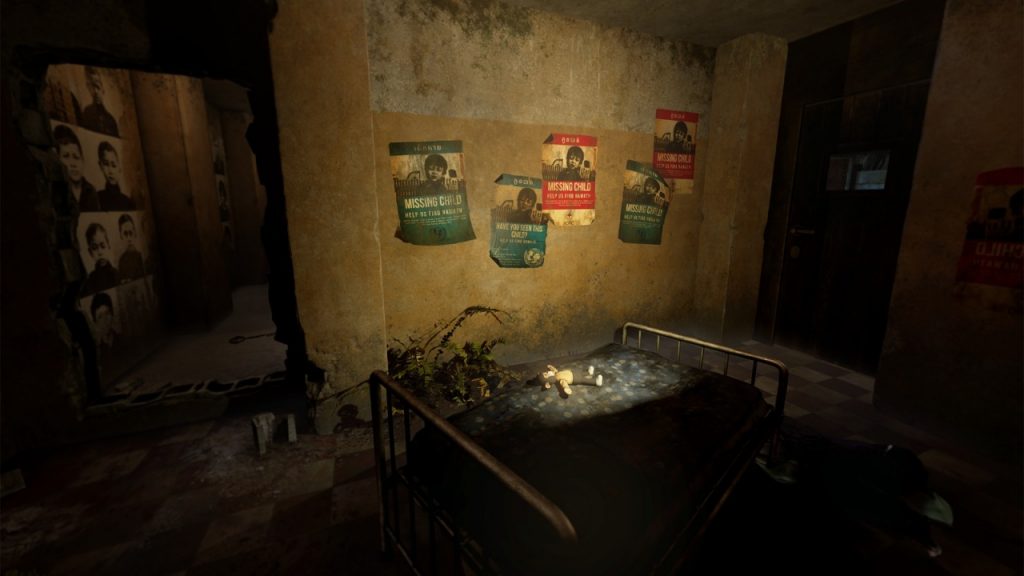
Developing an interactive documentary work
V. B. – I met the author of STAY ALIVE, MY SON, Pin Yathay, who currently resides in France, to interview him about the book, events that transpired after the book, and to discuss adapting his book into a virtual reality experience. With friends who had developed BENJAMIN BUTTON’s ageing technology, we showed him a picture of his older son (a picture that is present in the experiment), that was digitally aged to 50 years old, the age he would be today. As a basis, we used the only remaining photo Yahtay has of his son, Nawath, at 6 years old, then compiled ageing characteristics of Yathay to age Nawath into a man. And that’s when I realised that for him, the story was frozen in time. Yathay was still looking for a 6 year old son, not realising that he would be a man by now.
V. B. – On a human level, this was a powerful moment because then I realised the lasting trauma, anguish, and hope in parents across history who are still looking for their separated loved ones – wounds that never heal, but also a love that never dies. Narratively, instead of the experience containing the elements within the book, I decided to include this moment as my narrative starting point. I could go back to the brutal and unbelievable decisions that families have to make under inhumane circumstances so that audiences understand the generational impact of unjust wars and family separation. I conducted several interviews with Yathay to flesh out this point of view and develop the context.

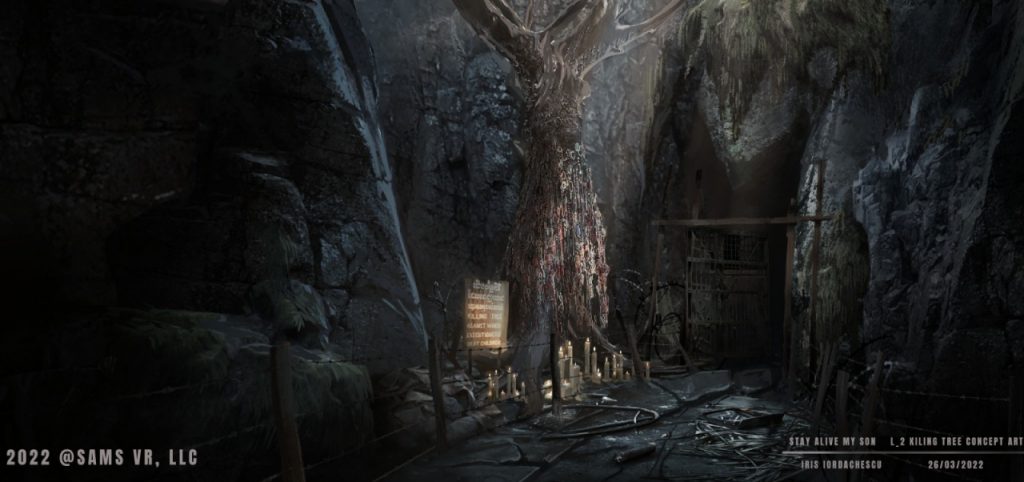

V. B. – This moment was also a technological turning point for me and my studio, UME, as well. I realised it was important for audiences to meet Yathay at present, as an 80 year old man, see and feel his loss before becoming him, going back to 1975 and reliving his story as a 33 year old in the experience. Technically, I wanted to use Metahuman technology – the most advanced technology available for the creation of digital humans. But this was a daunting, overly ambitious and nearly impossible task that took over three months to R&D and sculpt because this had not been achieved in virtual reality thus far due to its complexity and computational requirements. For example, each Metahuman has over 120,000 polygons that need to be rendered for each eye (240,000 polygons in total), not to mention the complex rigging system to enable the face (891 bones in the head) to have human-like expressions and fluid bodily movements (321 boned in the body) that could not be impaired by the personalised sculpt and texturing…and then there is the hair which was another technical hurdle. Eventually, we pioneered a new pipeline to sculpt a humanistic and realistic virtual human of Yathay that looked, felt, moved, and functioned in virtual reality and we were successful. The first ever Metahuman accomplished at LOD0 and in VR!! Achieving this, surfaced another need, to include a second Metahuman of Nawath so the player could finally have closure, thereby reuniting symbolically the father and his son. This proved to be an even more daunting task because children require different proportions and a varying approach and pipeline. I am very excited to show the completed experience to Yathay and hope, through it, to help him and millions of parents heal
V. B. – From all this work, STAY ALIVE MY SON became a personal quest. I didn’t want to make a simple documentary. By using VR, I also wanted to offer an interpretation, a more direct immersion into the story and emotional range thanks to the technology. We thought about each sequence in this sense, adding in particular the introduction as a real moment of explanation and meeting with the central character. I also wanted the viewer to be able to relive the major decisions of this man, this moral but also physical and endless labyrinth in which he found himself because of the decision he made to abandon his son so they could both survive. It was necessary to illustrate the doubts, the fears, the dark thoughts that followed, the unending and upending questions that this implies… And there is not necessarily a satisfactory answer, except that the power of hope is the only thing that remains in our heart that keeps us fighting for our loved ones and believing in the impossible! Therefore, the experience became a real emotional, spiritual, and symbolic journey for me as a director and, fundamentally, as a person.
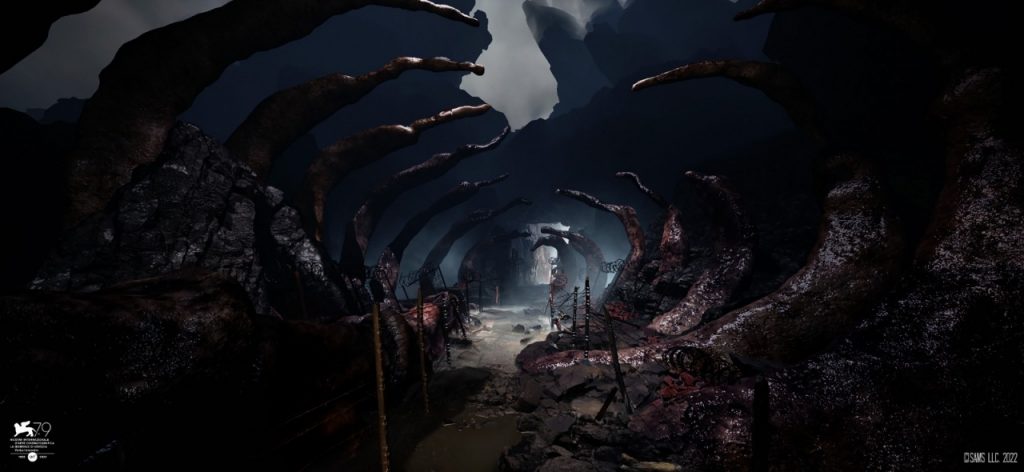
V. B. – Building such a dark and terrifying world for virtual reality was a real challenge but I felt I had to honour the tragic experiences of Yathay by being truthful about the horrors of this moment in history and showing the brutality in the subtle details in its art direction and environmental art. We had to think about the impact of the work on the audience and try to balance the piece by also speaking to the inspirational elements of his survival, his hope to find his son, and the strength of the human spirit to triumph over tragedy. Experiencing these emotions can be too intense, too hard at times but is there a “prettier or less intense” way of depicting and educating audiences about genocide?. The central character in the story, Yathay, has been through unimaginable loss and tragedy. Should I distance myself from that? I chose to be bold and truthful. But, as the story progresses, the audience understand that the genocide was not the end of Yathay’s life, but in a sense, a beginning. Because of the tragedy and loss, Yathay rebuilt his career, loved again, created a family again, wrote his memoirs, sought justice against the leaders of the Khmer Rouge by testifying at the United Nations Tribunal Hearings, and continues to look for his son. Yathay’s will to live and triumph over the past is the true message of this experience. I hope to bring with STAY ALIVE MY SON a new outlook to family separation and also as a form of pedagogy on these events so history is not sadly repeated.
How to decide on the intensity of an interactive experience
V. B. – We asked ourselves a lot of questions about the interactivity of the experience. The fact of using a real-time game engine, game mechanics, was a revolution for me, coming from the cinema. But it was also an incredible field of possibility! I also did a lot of research, but in the end I kept two essential narrative criteria. On the one hand, the story had to exist continuously. The user must continually live the story, its narration and its interactive elements must connect to their derivative emotions. We create a bond of trust with the Player by maintaining a flow state between mechanics and narrative so as to not frustrate the Player or distract from the emotional elements of the story. This is also where the complexity of the work and user testing lay. I wanted to keep the viewer with me in the story, while letting them solve simple puzzles while weaving in narrative moments, excitement and surprise. . It was a delicate balance.
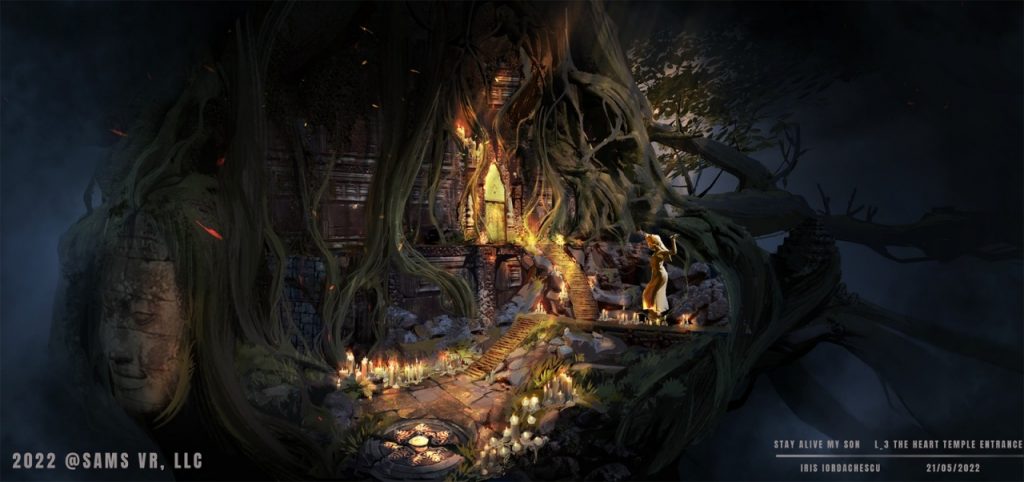
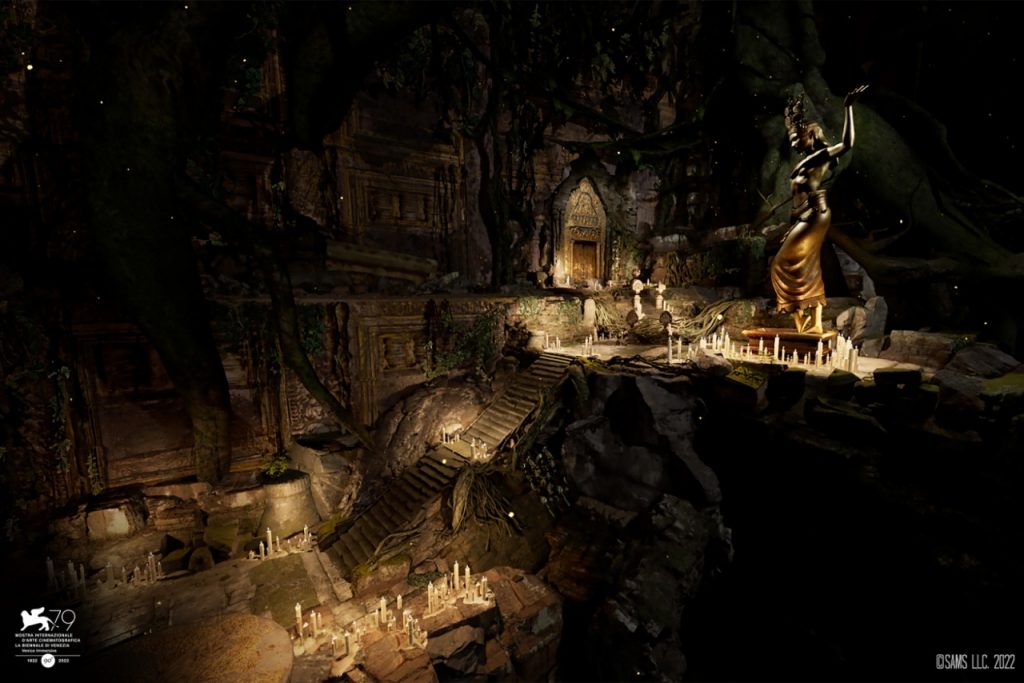
V. B. – The second essential point was to imagine game mechanics that did not diminish the emotion of the whole story. It would have been easy to go towards a more video game environment, without much nuance in the actions to be taken. That’s why we worked on the accessories, like the flashlight. The viewer uses it to find artefacts and objects, but it is also an essential element of their narrative progression and education about Cambodian history and culture. In fact, the flashlight also invoked a feeling of exploration of the world and details based on actual places (i.e. the concentration camp of S-21).. It immerses the user directly as they experience this story and this hero’s journey..
V. B. – Beyond being a director and creative director, I had to understand and balance game design to keep the narrative and emotion in the foreground. The narrative is then augmented by the spatial relationship between the player and the environment to invoke and underscore a specific feeling (i..e of claustrophobia, fear or elation and joy) via the experience’s converging level design, art direction, game design, and game mechanics. So I made specific choices to use photorealism , a labyrinth level design, lighting elements to guide the player path, and puzzle mechanics in each prison to connect to narrative cues. For sequences in the mental prison, I defined each prison based on each of Yathay’s biggest choices and regrets. For instance, the loss of his eldest son due to starvation and excessive work was linked in a prison where a rice can puzzle and mechanic to “feed the prisoners” was placed, thereby unlocking these memories. The loss of his wife in the jungle was conveyed in another prison via a brick mechanic to build the prison wall, thereby trapping her inside which symbolically sealed Yathay’s fate by allowing her to escape with him and now, having to survive alone.

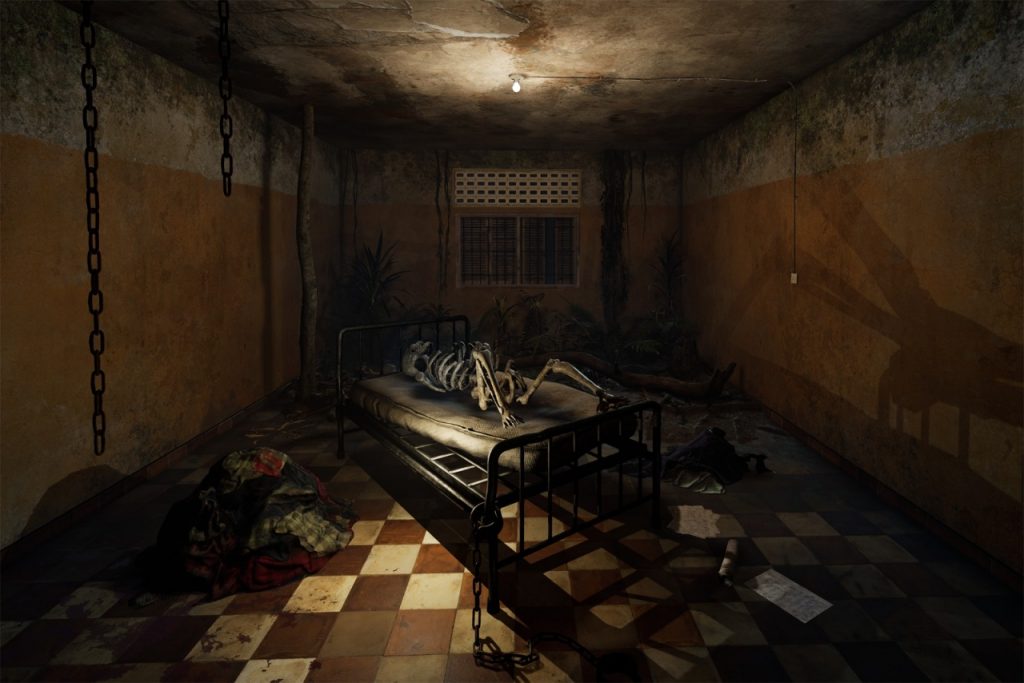
V. B. – Then, via extensive research we compiled a massive moodboard on Miro with diagrams, images of Angkor Wat, photographs of the victims, and images of the concentration camp of S-21 in Cambodia to enrich and anchor this mental prison to a real prison used by the Khmer Rouge. Finally, we developed a final blockout to test our assumptions in a functioning prototype where we also placed the memories of heartfelt scenes from the book I shot during the volumetric capture of our actors. It was a real uphill battle because when we first started the experience, we hired a Ukrainian level designer to create the block out, not knowing that a war would ensue a week later. He had to leave Kiev for safe harbour and could not continue the project. With little choice left and the Venice deadline looming, I had to learn how to create a block out in the engine via YouTube and created the first level and prototype of the prison. Luckily, a few months later, we secured our now lead concept artist and level artist who beautified the prison!
V. B. – The Ukrainian war continues to impact several team members throughout production but it has also fueled our passion to finish the experience because it spoke to the story of family separation we were trying to convey in the experience. . During this process, I was lucky to have an incredible team that was so deeply connected because of all that we endured together through the months that followed. We found strength in our joined creativity and shared purpose. My UME family: Greg, Iris, Alexandros, George, Mourad, Mostafa, Jana, T.K.,Yiannis, Andreas, and Jora – THANK YOU for bringing this story to life!!
V. B. – Originally, I wanted STAY ALIVE MY SON to start in his house, in the mid-70s, and for us to experience the evacuation, etc. live. I liked the idea of a chronological story in the right order, but it was a very linear story. So we replaced the first sequence with a leap in time, located today, in his house in France. This made it possible to tackle first the notions of guilt, to establish the perimeter of the action to come. Virtual reality allows this kind of time travel, and a less straight-line narrative. Then, we flexed the muscle of virtual reality to provide an entertaining and more gripping story by falling from the ordinary world and into the surreal – his haunting mental prison and his metaphorical heart which is based on the temple of Angkor Wat. We end in a beautiful, golden temple bathed by light because Yathay has evolved in his life and not remained trapped in the past. He has survived and rebuilt his life. The Player experiences this powerful and transformative journey as Yathay by choosing life over death, triumph over loss, and hope over despair.
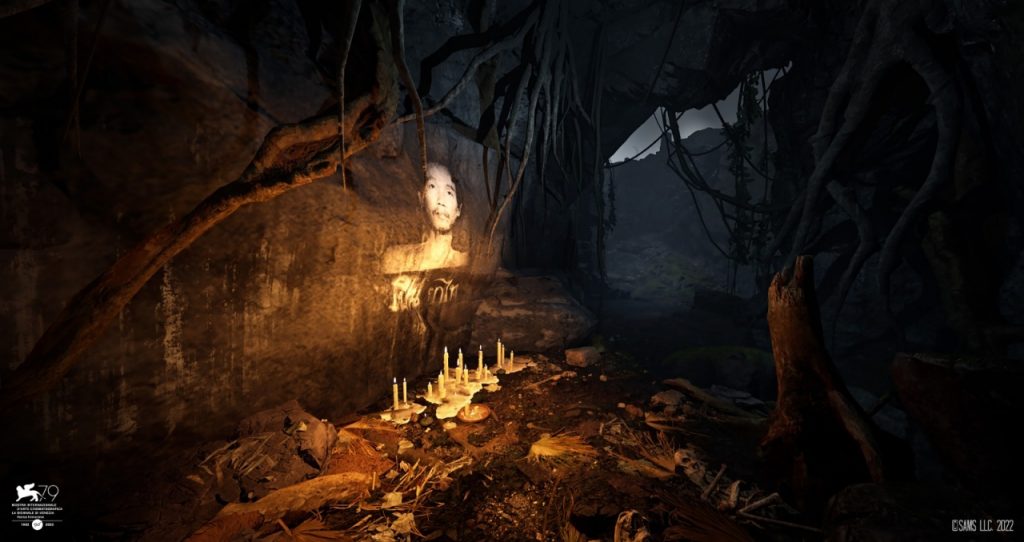
V. B. – At the end of the journey as is in real life, for Yathay, his son is still alive and he continues to live with the hope that they will be reunited one day. I hope this project will be seen by many people globally and they will help us reunite Yathay with his son. With his permission, I have also placed Yathay on 23&Me (a DNA genetic testing programme) to help him continue his search for his son. Could you imagine if this project helped bring this father and son together after 45 years? This would truly be a gift.
What’s next?
V. B. – I’m eager to continue pushing the medium forward by blurring the lines between cinema and video games to bring powerful stories of ordinary people becoming extraordinary through life’s circumstances. I am currently negotiating a few scripts and books for my next project! It’s all very exciting! But there are technical limitations that still exist that currently limit the medium. For instance, the hardware used (headsets and high performance computers) prevent wider audiences from seeing this work. There is a lack of a large distribution mechanism or platform to make it economically feasible to continue making larger scale works like STAY ALIVE MY SON. Until cloud computing enables real time streaming by a lighter and more affordable headset, the reach will be limited, therefore the investment in such a medium by larger studios and streamers will also be capped….. I saw at Venice Immersive a set of beautiful, very strong works that really deserve greater public and critical recognition. Today’s XR creators are pioneers in the field, with a lot of innovation and creativity. We need to encourage support for the industry as a whole to free the medium from these constraints and encourage new stories to emerge.
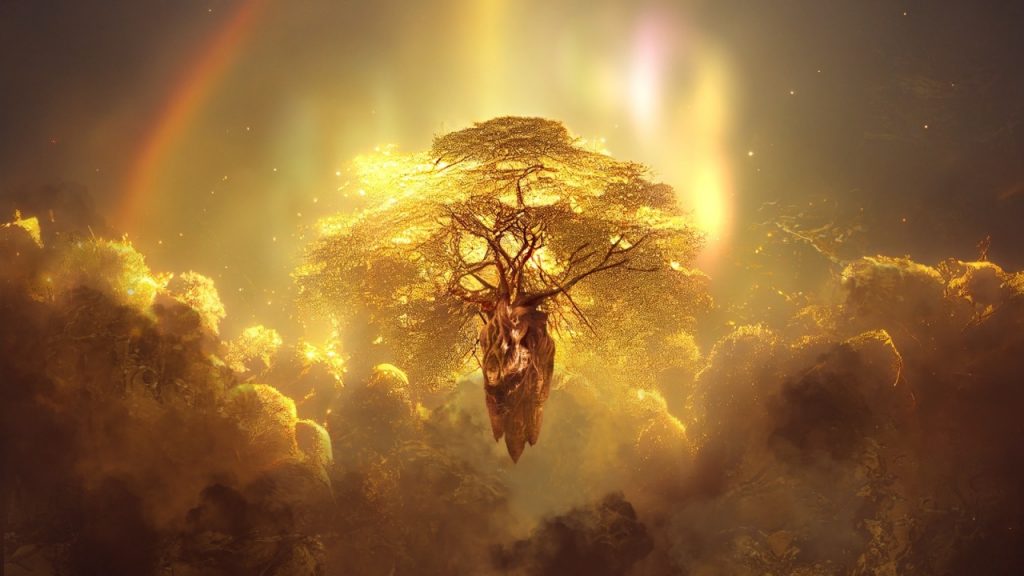
V. B. – Regarding the release of SAMS (STAY ALIVE MY SON), we are thinking of making a 360 version for distribution on existing platforms such as the mobile version of the Oculus Quest for wider audiences. This is unfortunately the reality of the market although I believe when Unreal 5 is available for VR, this barrier will enable a wider release with fewer constraint and SAMS its original format – it is around the corner! l But, in the next year, I feel it is important to honour the story we created originally and showcase it correctly in museums, VR arcades, LBE’s globally while continuing the festival tour. The most important thing for me is to share this powerful, true story and the inspirational message of SAMS to the world so we can continue to elevate as a society and peoples.SAMS!



Leave a Reply
You must be logged in to post a comment.